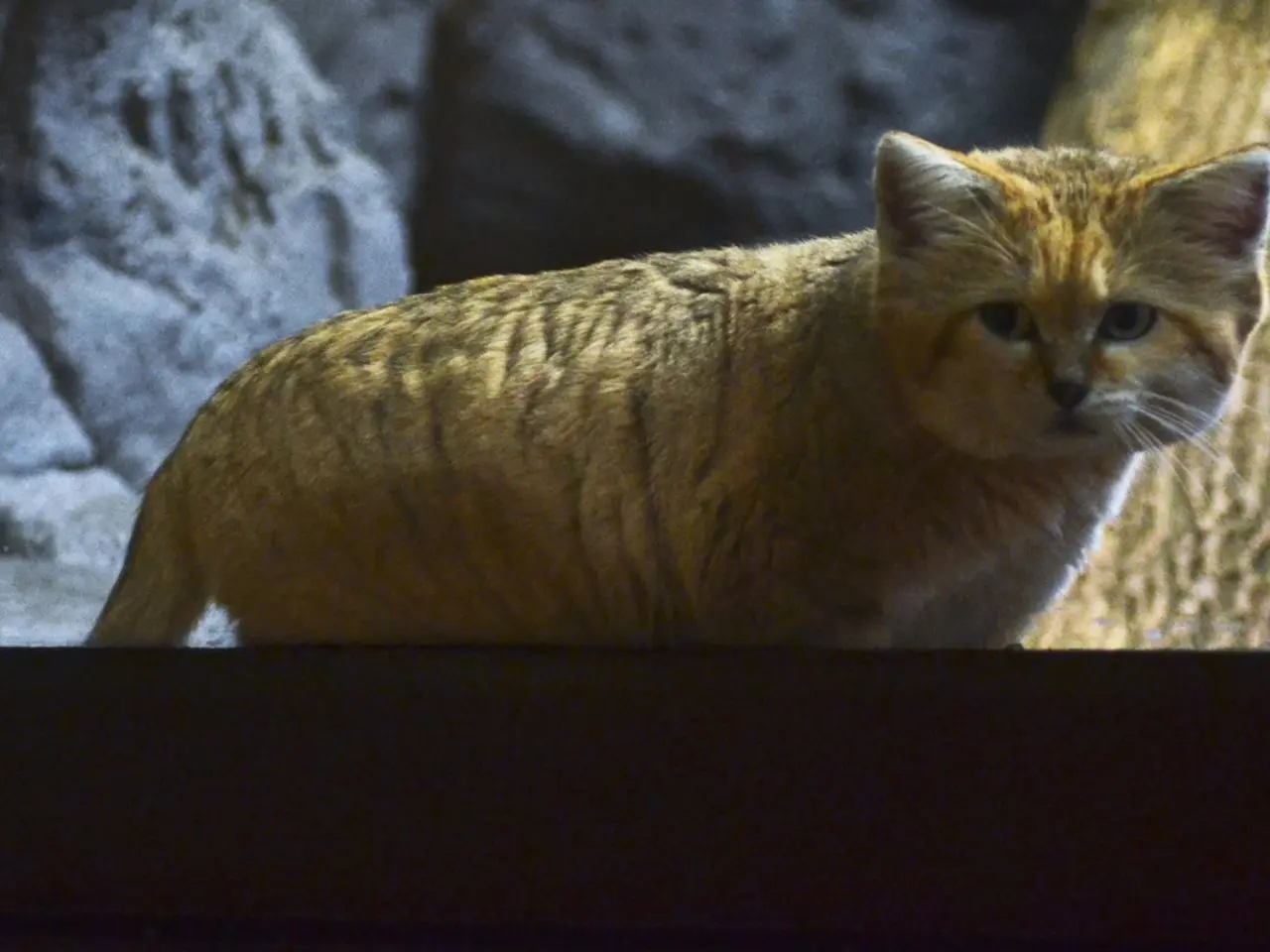Exploring the Optical Phenomenon Known as Cat's Eye Effect in Precious Stones
In the realm of gemstones, a unique optical phenomenon known as chatoyancy captivates the imagination. This effect, often described as a "cat's-eye", is characterised by a luminous band of reflected light that moves across the stone's surface, resembling the blinking eye of a cat.
Several gemstones exhibit this mesmerising property, each with its own composition, inclusions, and colours.
### Key Gemstones Showing Chatoyancy:
#### Cat’s-eye Chrysoberyl
The classic and most valued chatoyant gem, cat's-eye chrysoberyl displays a very sharp, straight "cat's eye" band, typically golden-honey to brownish-golden. The effect is caused by parallel inclusions of rutile needles or hollow tubes within the stone, clearly reflecting light in a focused band. This gem is prized for its sharp, strong chatoyancy and durability.
#### Tiger’s Eye
A semiprecious quartz variety, tiger's eye shows a vertical band of silky, golden to yellow-brown chatoyancy. The effect arises from parallel crocidolite (blue asbestos) fibers replaced by silica and iron oxides. It is known for its rich, warm golden luster and silky, shimmering band.
#### Hawk’s Eye
Related to tiger's eye but with less iron oxidation, hawk's eye maintains a gray-blue or blue-green color from the original crocidolite fibers. Hawk’s Eye exhibits a mesmerizing blue chatoyancy, which differs in colour and subtlety compared to the richer gold tones of tiger’s eye.
#### Blue Gemstones such as Hawk’s Eye and Dumortierite
Hawk’s eye interacts with light to show chatoyancy in a unique natural blue shade, making it distinct among cat’s-eye stones. Dumortierite and other blue minerals may show chatoyancy, but their effect is often less defined and more subtle compared to chrysoberyl or tiger's eye.
#### Tanzanite
While not traditionally known for classic cat's-eye effects, certain tanzanite specimens can show a chatoyant-like silky or wavy sheen due to inclusions. This chatoyancy is generally less distinct and more diffuse than the sharp bands seen in chrysoberyl or tiger’s eye, creating a shimmering surface rather than a sharp line.
#### Sunstone
Some sunstones feature chatoyancy, showing a changeable or shifting shimmering effect under light. This is due to the presence of reflective inclusions oriented in a way that produces a sparkling or glowing effect rather than a linear cat’s eye.
### How Chatoyancy Differs Among Them:
| Gemstone | Type of Inclusions | Color & Appearance of Chatoyancy | Distinctive Features | |-----------------|-------------------------------------|-------------------------------------------------|------------------------------------------------| | Cat’s-eye Chrysoberyl | Rutile needles or hollow tubes | Sharp, well-defined, golden to brownish band | Very sharp, bright, and valuable "cat’s eye" effect | | Tiger’s Eye | Parallel crocidolite fibers replaced by silica and iron oxides | Golden to yellow-brown silky band | Warm golden shimmer, fibrous structure | | Hawk’s Eye | Crocidolite fibers with less iron oxidation | Blue to gray-blue silky band | Blue chatoyancy rare among cat’s-eye stones | | Tanzanite | Various mineral inclusions | Wavy or silky sheen, less defined than cat’s eye| More diffuse shimmer, less precise band | | Sunstone | Reflective inclusions (like copper platelets) | Sparkling, changeable shimmer | Glittery effect rather than a linear band |
In summary, chatoyancy arises from the reflection of light off parallel fibrous or needle-like inclusions within a stone, but the visual effect varies significantly:
- Chrysoberyl produces the most sharp and distinct cat’s eye. - Tiger’s and hawk’s eye show fibrous silky bands with golden or blue tones. - Tanzanite and some sunstones exhibit softer, more diffuse shimmering or wavy sheens rather than a strict "cat's-eye" band.
This variation depends on mineral composition, inclusion type, and how the stone is cut (usually cabochon to best reveal the effect).
The fascinating property of chatoyancy is not limited to gemstones alone; it extends to various publications, workshops, and courses in the realm of gemmology and education-and-self-development. For instance, a course on gemmology may provide insights into the scientific aspects of this optical phenomenon.
Similarly, health-and-wellness workshops could delve into the therapeutic benefits of these captivating stones, while fitness-and-exercise publications might incorporate fitness tracker gadgets with technology that mimics the cat's-eye effect.
The entertainment industry could even capitalize on the allure of chatoyancy, creating movies or games around the mysterious cat's-eye stones. In the ever-evolving world of technology, future discoveries in science might lead to a wider array of publications and workshops dedicated to understanding and harnessing this unique gemstone property.
Furthermore, with the rise of online learning platforms, anyone with an interest can embark on a journey of self-discovery and educational growth in areas related to chatoyancy, be it gemmology, fitness, technology, or entertainment. With the right guidance and resources, who knows what fascinating discoveries await those who seek to understand this mesmerizing optical phenomenon.




